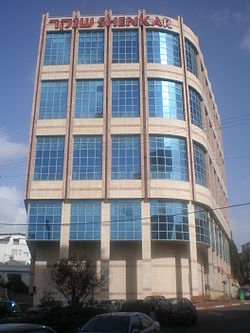weekly column
|
Each week, find a commentary on something connected to verses of Torah or another source of wisdom
|
|
Each week, find a commentary on something connected to verses of Torah or another source of wisdom
|
 The Exodus:5 Project The LORD said to Moses, “Say to the Israelite people, ‘You are a stiffnecked people. If I were to go in your midst for one moment, I would destroy you. Now, then, leave off your finery, and I will consider what to do to you.’” Exodus 33:5 There is a remarkable school just outside of Tel Aviv called the Shenkar Institute, a university-level school of engineering and design. I have mentioned it in other places, but I highlight it again because I have been surprised at the role fashion plays in this book of the Torah. When I say fashion, I do not mean couture, of course, but the clothes people wear and what it says about them. And Shenkar has placed itself at the intersection of cutting-edge technology and how design expresses our values and tastes. My wife and I visited the campus some years ago and saw some of these projects in development. One of Israel’s daily newspapers had commissioned a competition to created furniture out of recycled newsprint. Some students had been assigned to imagine a household product and develop packaging and a marketing strategy for it. On that particular day, graduating students were showing their final projects – wedding gowns that were to reflect a past moment in Jewish history – to a panel of professional fashion designers. And the remarkable president of the institute, Yuli Tamir, showed us a textile that had been grown from bacteria. (Don’t say eww; it was both beautiful and astonishing.) Those of us of the male persuasion sometimes roll our eyes at the different focus many of the women in our lives have on clothing. I will suggest that it is a matter of degree, not substance. How we dress, why we dress how we dress, and how we decide why we dress how we dress (got all that?) communicates as much about ourselves to the world around us as any other choice we make. Clothing (and the right accessories) includes an element of the aesthetic, larger or smaller, but it also makes important statements about how comfortable we are in our bodies, what we intend to accomplish when dressed as we are and which other people we declare to be our cohort. Clothing can make a statement of our uniqueness, of imitation or of a desire to disappear into the crowd or the landscape. Of course, some clothing choices are not personal. Military personnel, medical practitioners, responders, sports team members and even fast-food employees wear outfits we call uniforms because they are designed to convey skill or authority, but not really individuality. The clothing is chosen specifically to represent a role that the person plays. Or, the depersonalization of clothing may have the purpose of depersonalizing the individual. Inmates in jails and prisons have sacrificed their opportunity to self-expression through clothing. In fact, the stripes or bright colors or larger letters “INMATE” on their clothing are specifically to place the imposed identity of criminal on them ahead of any other aspect. There is a presumption of how someone in such a uniform may be treated, and especially if person wearing those clothes is outside the place of confinement.
0 Comments
Leave a Reply. |
Archives
October 2023
Categories |